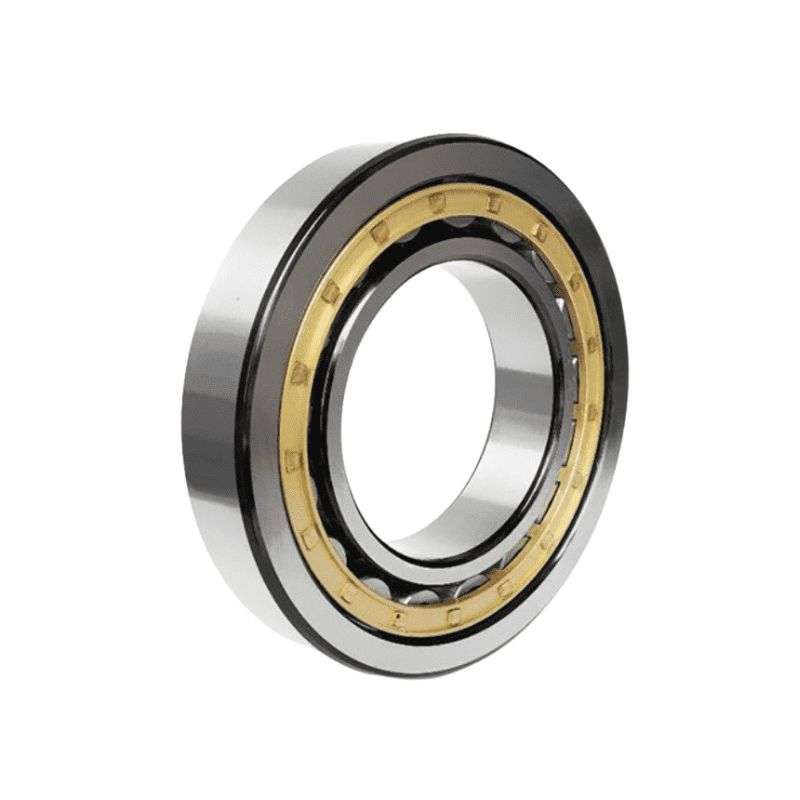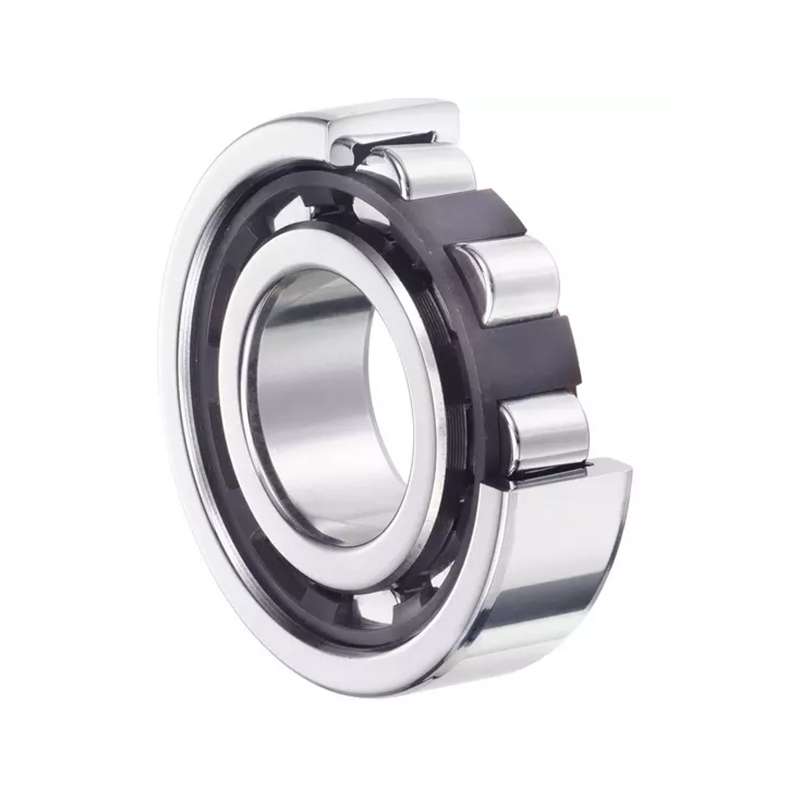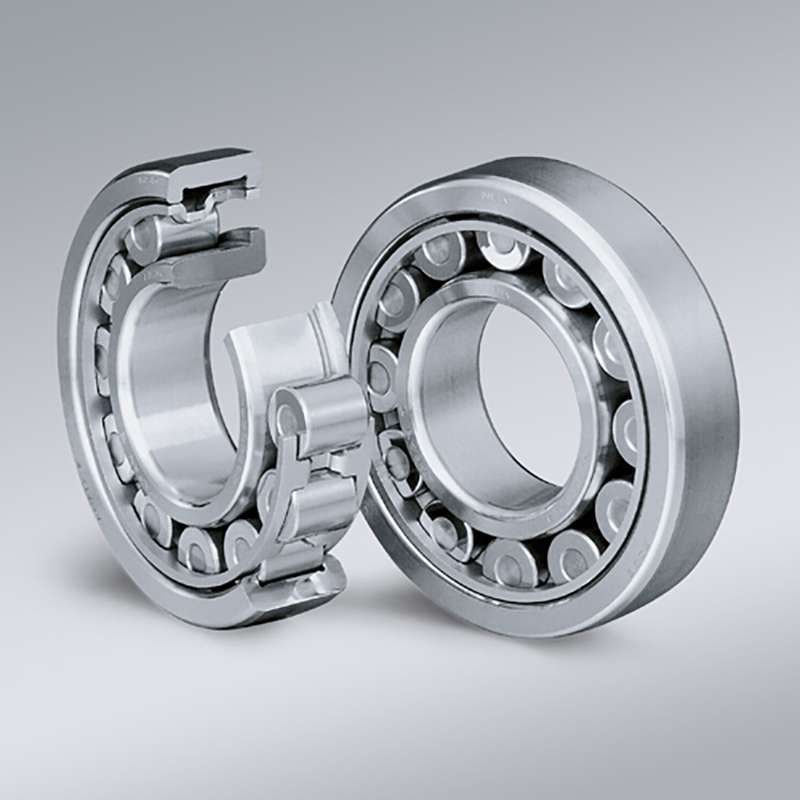Cylindrical Roller Bearings
Table of Contents
Categories
Definition of Cylindrical Roller Bearings
Cylindrical roller bearings are mechanical devices that facilitate rotational movement between two components by using cylindrical rollers to reduce friction and support radial loads in various applications.

FHD Bearings is an ISO 9001:2015 certified manufacturing enterprise that stsock a full range of Cylindrical Roller Bearings,Tapered Roller Bearings,Spherical Roller Bearings,Needle Roller Bearings,Thrust Roller Bearings and Crossed Roller Bearings. With over 1,200 different bearing sizes and over 250K bearings in stock.
Materials of Cylindrical Roller Bearings
Steel
Most roller bearings are made from various grades of steel, such as carbon steel or alloy steel, for strength and durability.
Stainless Steel
Offers corrosion resistance, making it suitable for applications where exposure to moisture or harsh environments is a concern.
Chrome Steel
A popular choice due to its high hardness, wear resistance, and good corrosion resistance properties.
Plastic
Some bearings use plastic materials for the cage or rolling elements, providing benefits such as lightweight construction and resistance to corrosion in certain environments.

Ceramic
Bearings with ceramic rollers or balls are used for specific applications where high temperature, corrosion resistance, or electrical insulation is required.
Brass
Brass is a common material for bearing cages due to its machinability, corrosion resistance, and ability to withstand high-speed applications.
Features of Cylindrical Roller Bearings

1.High Radial Load Capacity: Cylindrical roller bearings excel at handling significant radial loads efficiently.
2.Low Friction: With a design optimized for reduced friction, these bearings offer energy-efficient rotational movement.
3.Space Efficiency: Their compact design makes cylindrical roller bearings suitable for applications with limited installation space.
4.Versatile Configurations: Available in single-row, double-row, and multi-row designs, they adapt to various load and speed requirements.
5.High-Speed Capability: Precision engineering allows cylindrical roller bearings to operate at high speeds.
6.Shock Resistance: Robust construction, often from materials like chrome steel, provides excellent resistance to shock and impact loads.
6.Alignment Compensation: Certain designs can accommodate misalignment, enhancing suitability for diverse industrial applications.
Advantages of Cylindrical Roller Bearings
1.High Radial Load Capacity: Cylindrical roller bearings efficiently handle heavy radial loads due to their increased contact area.
2.Versatile Axial Load Support: They can accommodate axial loads, making them suitable for applications with combined radial and axial forces.
3.Space-Efficient Design: Cylindrical roller bearings offer high load-carrying capacity in a compact footprint, ideal for limited installation space.
4.Rigidity and Stability: Inherent rigidity ensures stable and precise operation, preventing deflection or deformation under load.
5.Configurational Versatility: Available in various configurations (single-row, double-row, etc.), providing flexibility for specific application needs.
6.Ease of Assembly and Maintenance: Designed for easy assembly and disassembly, facilitating efficient maintenance and replacement processes, minimizing downtime.

Applications of Cylindrical Roller Bearings

- Automotive Industry: Found in wheel hubs, transmissions, and engine components, cylindrical roller bearings contribute to the smooth operation of various automotive systems.
- Industrial Machinery: Widely used in machine tools, gearboxes, and electric motors, these bearings support rotational motion in diverse industrial applications.
- Material Handling Equipment: Cylindrical roller bearings are common in conveyor systems, forklifts, and crane swivels, where they withstand heavy loads and frequent movements.
- Mining and Construction: These bearings play a crucial role in heavy-duty equipment like crushers, excavators, and conveyor belts in mining and construction machinery.
- Aerospace Industry: Cylindrical roller bearings find applications in aircraft engines, landing gear systems, and other aerospace components, where precision and reliability are paramount.
- Railway Systems: Used in railway axle boxes, traction motors, and gearboxes, cylindrical roller bearings contribute to the efficient and reliable performance of railway systems.
Key Manufacturing Process of Cylindrical Roller Bearings
Heat Treatment: Components like rollers, inner and outer rings undergo heat treatment processes, such as quenching and tempering, to achieve the desired hardness and improve their mechanical properties.
Precision Grinding: Precision grinding is a critical process to achieve the necessary tolerances and surface finish for cylindrical roller bearings. This ensures smooth operation and minimizes friction.
Cage Fabrication: The fabrication of cages involves processes like stamping, machining, or molding, depending on the material used. Precision in cage manufacturing is crucial for maintaining proper roller spacing and alignment.
Assembly: Assembling various components, including rollers, inner and outer rings, cage, and seals, with precision is essential for the proper functioning of the cylindrical roller bearing.
Lubrication: Lubrication is applied during the manufacturing process or as part of the final assembly. Proper lubrication is critical for reducing friction and preventing premature wear.
Quality Control: Rigorous quality control measures, including dimensional checks, inspection of surface finish, and testing for load capacity, are implemented to ensure that the manufactured cylindrical roller bearings meet specified standards and performance criteria.

FAQ - Frequently Asked Questions

A cylindrical roller bearing is a type of rolling element bearing that utilizes cylindrical rollers to support radial and axial loads. It consists of inner and outer rings, cylindrical rollers, a cage (optional), and may include seals or shields.
Cylindrical roller bearings offer high radial load capacity, versatility in handling axial loads, space efficiency, rigidity, configurational flexibility, and ease of assembly and maintenance.
They are commonly found in automotive systems, industrial machinery (gearboxes, electric motors), material handling equipment, mining and construction machinery, aerospace components, and railway systems.
Consider factors like load requirements, operating speed, temperature, and available space. Choose the appropriate bearing type (single-row, double-row, etc.) and material based on the application’s demands.
Materials include chrome steel (AISI 52100), stainless steel, ceramic, brass, and synthetic polymers, each chosen based on factors like load capacity, corrosion resistance, and operating conditions.
Lubricants can be oils or greases, chosen based on factors such as speed, temperature, and load. Regular monitoring and proper lubrication practices are essential for optimal performance.
The frequency of lubrication depends on factors like operating conditions and the type of lubricant used. Regular maintenance intervals and monitoring can help determine the appropriate relubrication schedule.
Yes, cylindrical roller bearings are designed to handle both radial and axial loads. Their versatility makes them suitable for applications with varying force directions.
Heat treatment enhances the hardness and mechanical properties of bearing components, ensuring durability and optimal performance under load.
Yes, follow manufacturer-recommended installation procedures, ensuring proper alignment, torque, and preload. Avoid over-tightening, and use appropriate tools to prevent damage during installation.
Installation and Maintenance of Cylindrical Roller Bearings
Installation
- Cleanliness: Ensure a clean working environment. Clean the shaft, housing, and all components to prevent contamination during installation.
- Verify Dimensions: Confirm that the shaft and housing dimensions match the specified tolerances. Check for any burrs or imperfections that could affect the fit.
- Choose Proper Installation Method: Select an appropriate installation method based on the bearing type, fit, and application requirements (e.g., press fit, heat mounting, cold mounting).
- Align Components: Carefully align the bearing components during installation. Misalignment can lead to premature wear and reduced bearing life.
- Secure with Fasteners: If applicable, secure the bearing with appropriate fasteners, such as locknuts or lockwashers. Follow recommended torque values to prevent over-tightening.
- Verify Rotation: Rotate the shaft to ensure smooth movement and check for any unusual noises or resistance. This step helps confirm proper installation.


Maintenance
- Regular Lubrication: Implement a regular lubrication schedule using the recommended lubricant. Ensure proper lubrication intervals and use the correct amount to prevent issues such as overheating and premature wear.
- Temperature Monitoring: Regularly monitor the operating temperature of the bearing. Elevated temperatures can signal problems like insufficient lubrication or misalignment.
- Alignment Checks: Periodically check and realign the bearing if necessary. Misalignment can lead to increased friction and decreased efficiency.
- Vibration Analysis: Use vibration analysis tools to detect abnormal vibrations that may indicate issues within the bearing. Address any irregularities promptly.
- Inspect Seals and Shields: Regularly inspect seals and shields for damage or wear. Damaged seals can compromise the bearing’s integrity, allowing contaminants to enter.
- Scheduled Maintenance: Plan for scheduled maintenance intervals, including disassembly and inspection. This proactive approach helps identify potential problems early and ensures the bearing’s continued reliability.
















